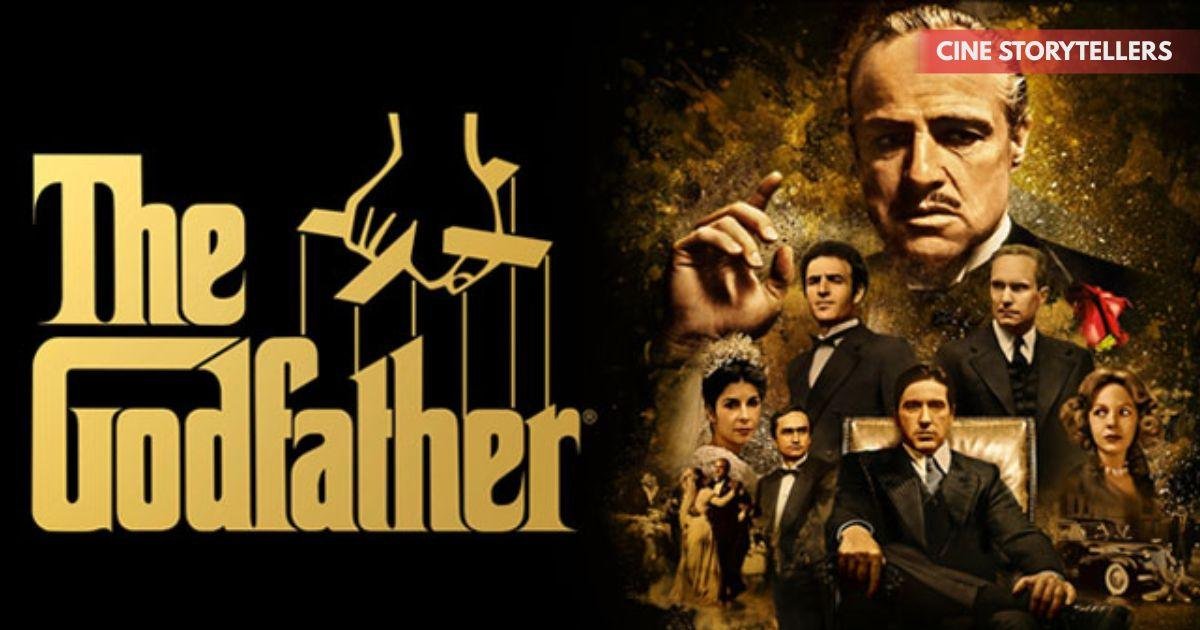The history of The Godfather in Hollywood is one of the most celebrated stories in film history. More than just a mob movie, The Godfather became a cultural phenomenon, transforming the gangster genre and influencing generations of filmmakers. Adapted from Mario Puzo’s best-selling novel, Francis Ford Coppola’s vision brought to life a saga of power, family, and betrayal that continues to captivate audiences over five decades later.
Origins: From Novel to Big Screen
In 1969, Mario Puzo published The Godfather, a gripping tale of the Corleone crime family. The book quickly became a bestseller, attracting Hollywood’s attention. Paramount Pictures acquired the film rights for just $80,000 — a bargain considering the story’s future impact.
Initially, Paramount struggled to find the right director. After several refusals, they hired Francis Ford Coppola, then a relatively unknown filmmaker, to adapt Puzo’s novel. Coppola saw the story not just as a crime drama but as a complex portrait of the American dream’s dark side.
Casting Controversies and Breakthroughs
The casting process became one of the most debated in Hollywood history. Paramount executives were skeptical of Coppola’s choices:
- Marlon Brando as Vito Corleone: Studio heads initially resisted due to Brando’s reputation for being difficult, but Coppola’s screen test convinced them otherwise.
- Al Pacino as Michael Corleone: Pacino was a relatively unknown stage actor, but Coppola insisted he was perfect for the role.
- James Caan, Robert Duvall, and Diane Keaton rounded out the ensemble cast, bringing depth and authenticity to the story.
These decisions proved to be career-defining for nearly everyone involved.
The Godfather (1972): A Cinematic Revolution
Released in March 1972, The Godfather became an instant classic. It was both a critical and commercial success, grossing over $250 million worldwide — a record at the time.
Key reasons for its revolutionary impact included:
- Realism: Coppola’s attention to detail, from period costumes to authentic Italian-American culture.
- Cinematography: Gordon Willis’ dark, shadowy visuals earned him the nickname “The Prince of Darkness.”
- Themes: The blending of family loyalty with organized crime created moral complexity rarely seen in Hollywood before.
The film won three Academy Awards: Best Picture, Best Actor (Marlon Brando), and Best Adapted Screenplay (Coppola and Puzo).
The Godfather Part II (1974): Breaking Sequel Rules
Two years later, Coppola released The Godfather Part II, which many critics consider even greater than the original. The film was unique for being both a sequel and a prequel — following Michael Corleone’s rise as head of the family while also telling the backstory of young Vito Corleone (played by Robert De Niro).
Achievements included:
- Winning six Oscars, including Best Picture, Best Director, and Best Supporting Actor for De Niro.
- Expanding the narrative scope to explore political corruption, immigrant struggles, and the loss of family values.
- Proving that sequels could match or surpass the quality of their predecessors.
The Godfather Part III (1990): A Controversial Conclusion
Sixteen years later, Coppola returned to complete the saga with The Godfather Part III. While the film earned mixed reviews compared to its predecessors, it still performed well at the box office and received seven Academy Award nominations.
Key aspects of the film’s legacy include:
- Michael Corleone’s tragic downfall, ending the trilogy on a note of moral reckoning.
- Sofia Coppola’s performance as Mary Corleone, which received criticism but has since been re-evaluated by some film scholars.
- The 2020 recut, The Godfather, Coda: The Death of Michael Corleone, which offered a revised structure closer to Coppola’s original vision.
Cultural Impact of The Godfather in Hollywood
The history of The Godfather in Hollywood is inseparable from its influence on American pop culture and cinema:
- Iconic Quotes – Lines like “I’m gonna make him an offer he can’t refuse” have become part of everyday language.
- Influence on Filmmakers – Directors like Martin Scorsese, Quentin Tarantino, and David Chase (The Sopranos) cite it as a major inspiration.
- Shaping the Gangster Genre – The film redefined how organized crime stories were told, focusing on character depth rather than simple violence.
- Academic Study – Film schools worldwide study its screenplay, cinematography, and thematic layers.
Awards and Recognition
Over the years, The Godfather trilogy has accumulated:
- 9 Academy Awards
- Multiple Golden Globes
- Preservation in the U.S. National Film Registry
- Consistent ranking in the top spots on AFI’s “100 Years…100 Movies” list
The Godfather’s Place in Modern Hollywood
Even decades later, The Godfather continues to be relevant. The trilogy has been restored and re-released in high-definition formats, attracting new generations of fans.
In 2022, the 50th anniversary sparked global celebrations, with special screenings, documentaries, and retrospectives exploring its creation. Streaming platforms have also introduced the films to younger viewers, ensuring the legacy continues.
Lessons from The Godfather for Filmmakers
The enduring success of The Godfather in Hollywood offers valuable lessons:
- Story First: Strong characters and layered themes create timeless appeal.
- Creative Vision: Protecting artistic integrity, as Coppola did, can define a film’s success.
- Cultural Authenticity: Grounding fiction in cultural and historical detail enhances credibility.
Also Read : Randy White dies at 72, Husband of Country Star Lorrie Morgan, After Battle With Cancer
Conclusion: An Offer Hollywood Couldn’t Refuse
The history of The Godfather in Hollywood is more than the tale of a successful film trilogy — it’s the story of how one work of art can shape an entire industry. From Mario Puzo’s novel to Coppola’s direction, the performances, and the unforgettable music by Nino Rota, The Godfather remains a gold standard for storytelling in cinema.
Its themes of power, loyalty, and moral compromise continue to resonate, proving that great films, like the Corleone family itself, have a way of staying in power for generations.
Join our WhatsApp channel for more updates and information about celebrities and entertainment

I’m Atul Kumar, founder of Cine Storytellers and an entertainment creator with 5+ years of experience. I cover films, celebrities, music, and OTT content with a focus on accurate, ethical, and engaging storytelling. My goal is to bring readers trustworthy entertainment news that informs, inspires, and goes beyond gossip.
Discover more from Cine Storytellers
Subscribe to get the latest posts sent to your email.
